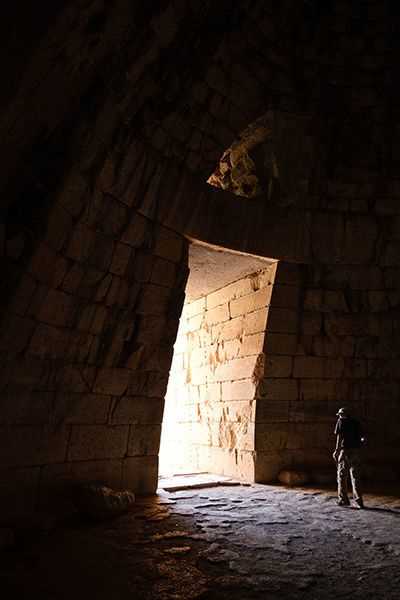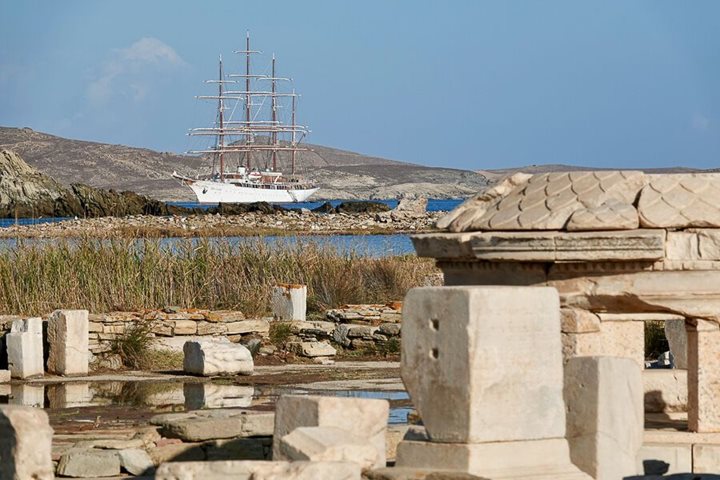We dropped anchor in the bay of Naflion just beneath the imposing Venetian fortress whose elaborate, fortified walls covered much of the hillside. Our first stop of the day was the very important ancient Mycenaean city of Mycenae, the royal city of Homer’s Agamemnon. The name of the city is not Greek and suggests strongly that the first inhabitants, ca. 2000BC, came from Crete. The city was a powerful force in Peloponnese until 1200 BC when it was deserted. We first visited the massive corbelled grave, which is 13 meters across and 14 meters high—the largest such grave in all of Greece. The lintel stone at the entrance weighs 140 tons.
The ancient builders were masters of geometry and design. All the stones were carved with bronze tools, which are considerably softer than iron, suggesting that there were large workshops onsite to produce the necessary building tools. We then walked up to the imposing citadel. And passing through the lion gate, we saw the 16th-century BC cemetery now called Circle A. It is within this cemetery that Schliemann discovered the tombs of the elite individuals he believed were Agamemnon, his wife Clytemnestra, their son Orestes, and their daughter Electra. Upon unearthing the golden death mask, Schliemann exclaimed “that I have looked on the face of Agamemnon.” We now know this was a mistake since the individuals buried here lived at least four centuries before the participants in the Trojan War ca. 1230. Although Homer’s account of the Trojan War has considerable inaccuracies, he was precisely right when he referred to the city of Mycenae as rich in gold.
Our second stop was the best-preserved Greek theater of Epidaurus. This city first achieved fame as an important cult center dedicated to the god of healing, Asclepius. The theater was just a short walk from the coaches and in no time, we were standing before one of the most beautiful theaters of antiquity. It seats approximately 12,500 and is divided into symmetrically identical sections. The acoustics are nothing short of perfect. Standing in the center of the orchestra atop the sacred stone marking the altar, you can be easily heard from the very top tier of seats. The theater was built during the heyday of Greek dramatic productions, around 330 BC. The plays of the tragedians Aeschylus, Sophocles, and Euripides and the political satires and slapstick comedy of Aristophanes would bring people from all over the Peloponnese. The theater is still used today, and there are theatrical festivals held here every summer.
We returned to Sea Cloud and were treated to a Greek-themed barbecue on the Lido Deck. Following dinner, the Sea Cloud Shanty Gang entertained us with traditional sea shanties.
Photo A: The sun shone on the lion gate as we entered into the ruins of Mycenae.
Photo B: The entrance to a large beehive-shaped tomb outside of Mycenae, referred to as the Tomb of Agamemnon, was constructed of enormous cut stone.
Photo C: At the center of the stage at Epidaurus, someone tested the acoustics of the theater.









